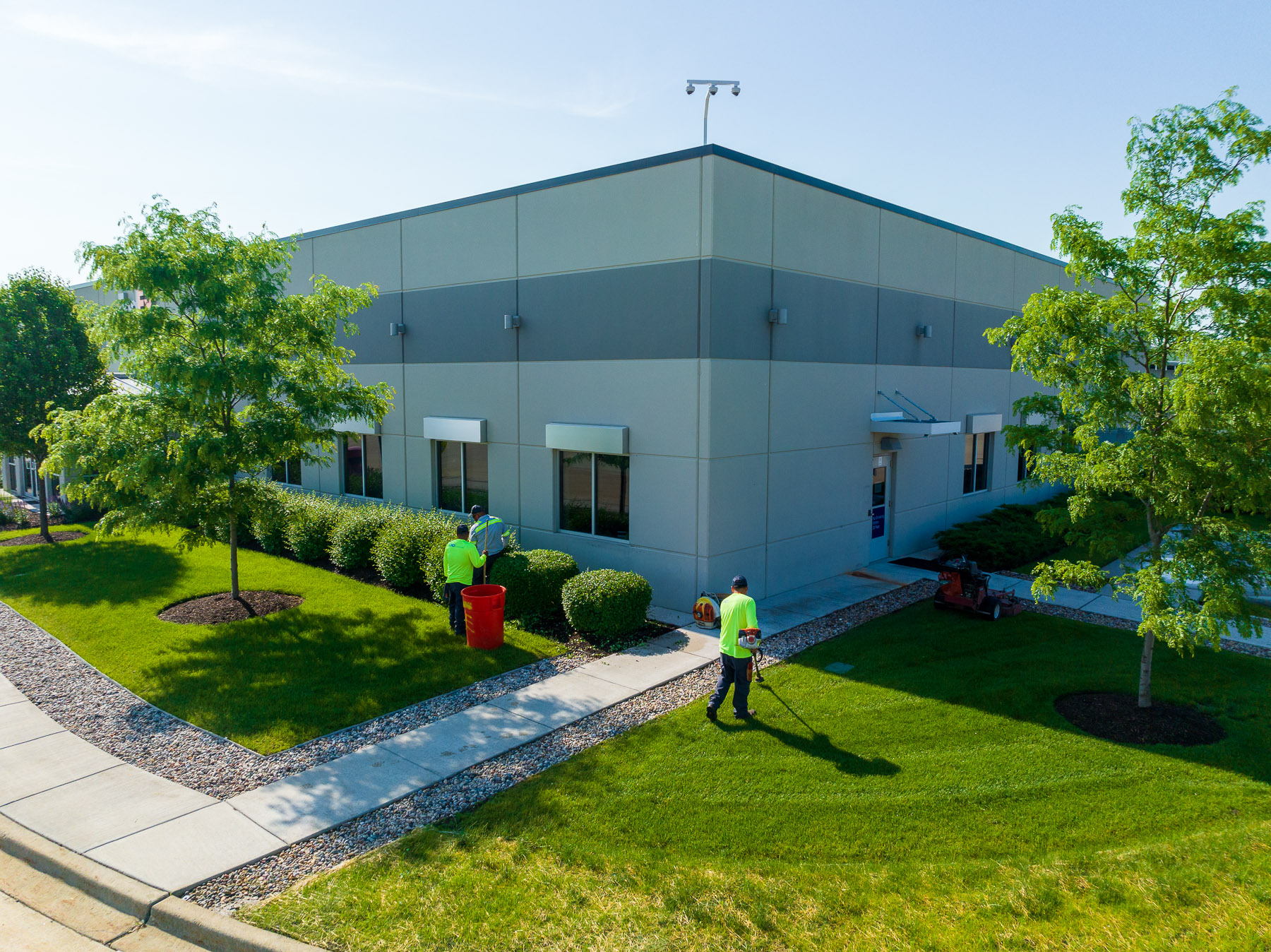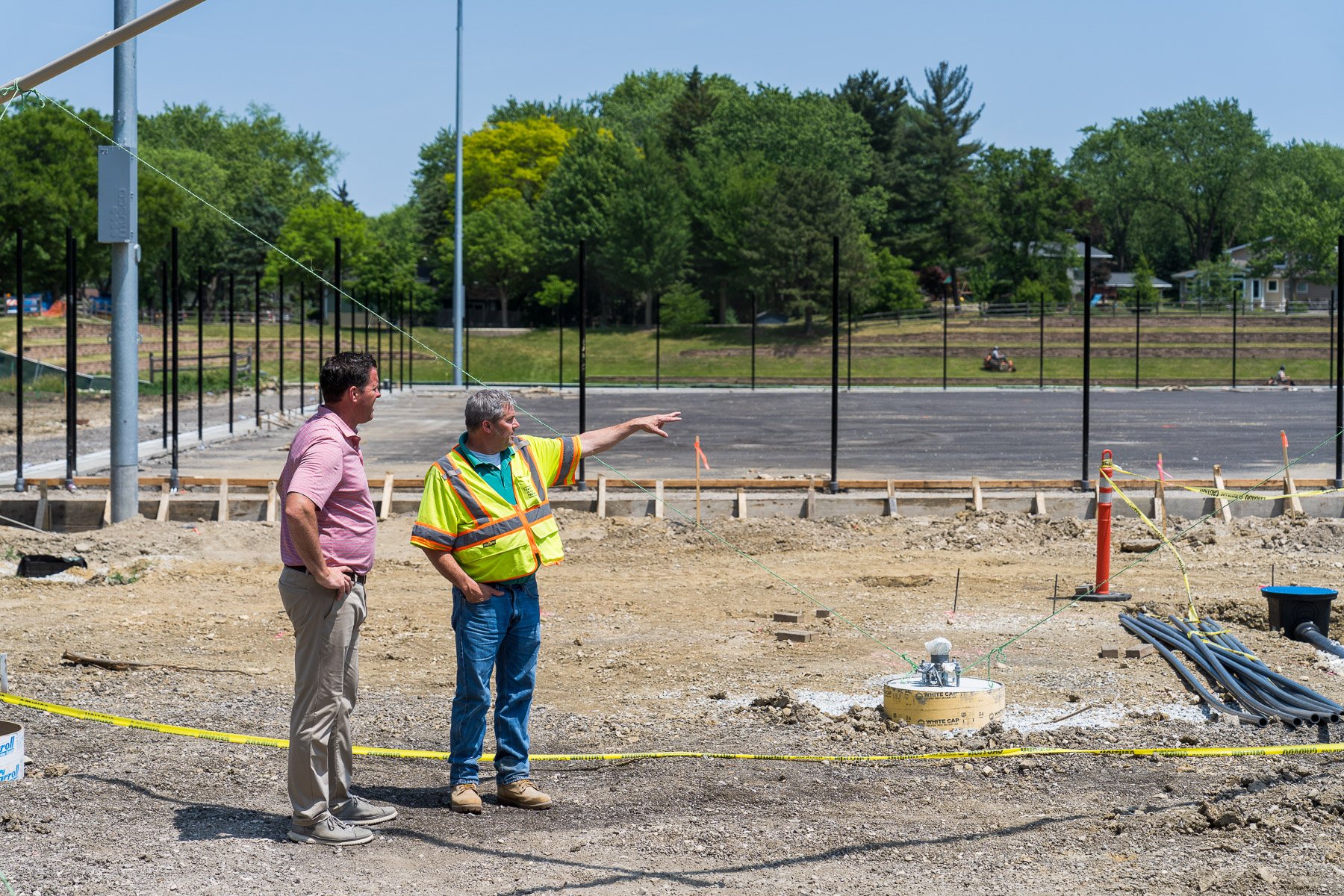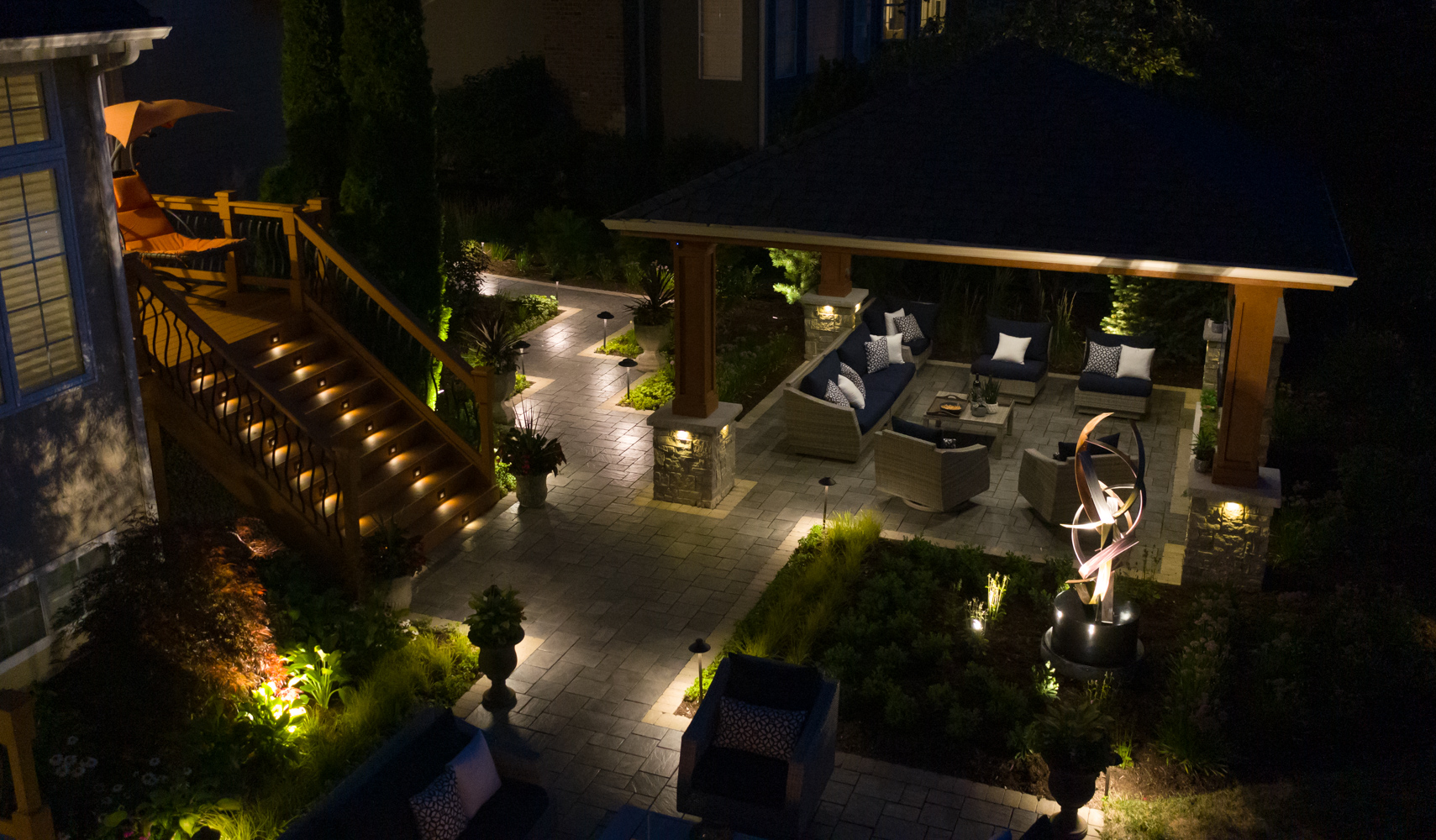As a Greater Chicago commercial landscape property manager, you have a lot of responsibilities on your very full plate.
You must make sure the interior of your facility is working well and keeping everyone indoors happy. But you also want to make sure you’re covering all of your outdoor bases because you know how much a great landscape can impact your entire operation.
You can be instantly judged by customers, visitors, or guests who see your building’s exterior appearance and disapprove. Making that positive first impression is crucial.
This is also an opportunity to increase traffic and improve traffic flow at your site.
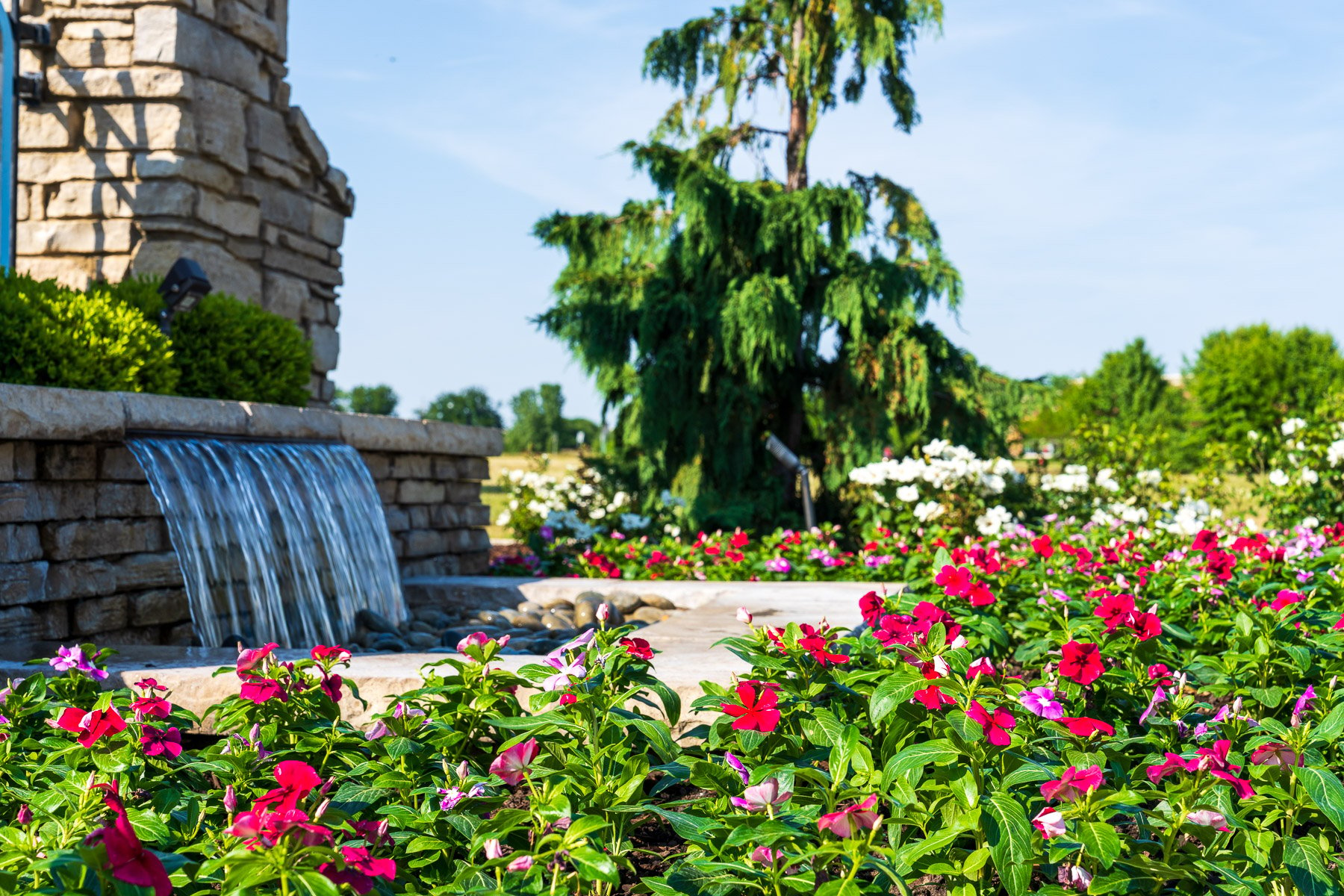
You might manage an office park and you want businesses to be happy there and to create a positive experience for the employees.
For your industrial facility, you want smooth vehicle and delivery traffic and to present a professional business image.
When it comes to retail centers, encouraging shoppers to not only stop but to stay awhile becomes a big part of your commercial landscape maintenance plan.
And if you operate healthcare or educational facilities, you must have a safe property for patients and students to navigate, as well as one that provides easy access and a soothing landscape. You want every person who sets foot on your property to feel welcome and to tell others how much they enjoy it.
Since your commercial landscape is the first thing people notice, it can make a huge difference on your facility’s curb appeal, perception, value, safety, and even recruitment and retention efforts. And that means not leaving out any important seasonal landscape maintenance tasks.
In this guide, we’ll discuss how you can implement an effective commercial landscape maintenance schedule for your Greater Chicago property so you can reap all of these benefits and maximize what your exterior can do for your commercial business.
Table of Contents
- Adapting to Chicagoland’s Unique Climate: A Landscaper’s Perspective
- Spring Landscaping Essentials: Revitalizing Your Commercial Property
- Summer Landscaping Strategies: Nurturing Growth in the Heat
- Fall Landscape Maintenance: Gearing Up for Chicago’s Winters
- Winter Landscaping and Snow Management
- Sustainable Landscaping Practices for Commercial Properties
- Choosing the Right Commercial Landscaping Partner in Chicagoland
- Conclusion
Adapting to Chicagoland’s Unique Climate: A Landscaper’s Perspective
Your commercial landscape is always growing and changing.
This can make your job as a property manager challenging. You must create and maintain commercial landscaping in Chicagoland that works for you through each and every season and these ever-changing weather conditions. And Mother Nature doesn’t always deliver the kind of conditions you prefer.
The Greater Chicago area is known for its warm, humid summers; cold, snowy, windy winters, and frequent fluctuations that happen during each in regards to temperature, humidity, and wind direction. The area also has wet springs and brisk falls that are full of vibrant fall color. While the four distinct seasons are certainly a draw for area businesses, they also showcase the need for seasonal landscape maintenance.
Chicago springs start in mid-March when the cold weather begins to ease. At this time of year, temperatures can range from from 30 degrees Fahrenheit to the high 50s or even 60s. Rain comes and goes and temperatures fluctuate, but color emerges in spring bulbs and early-blooming trees and plants.
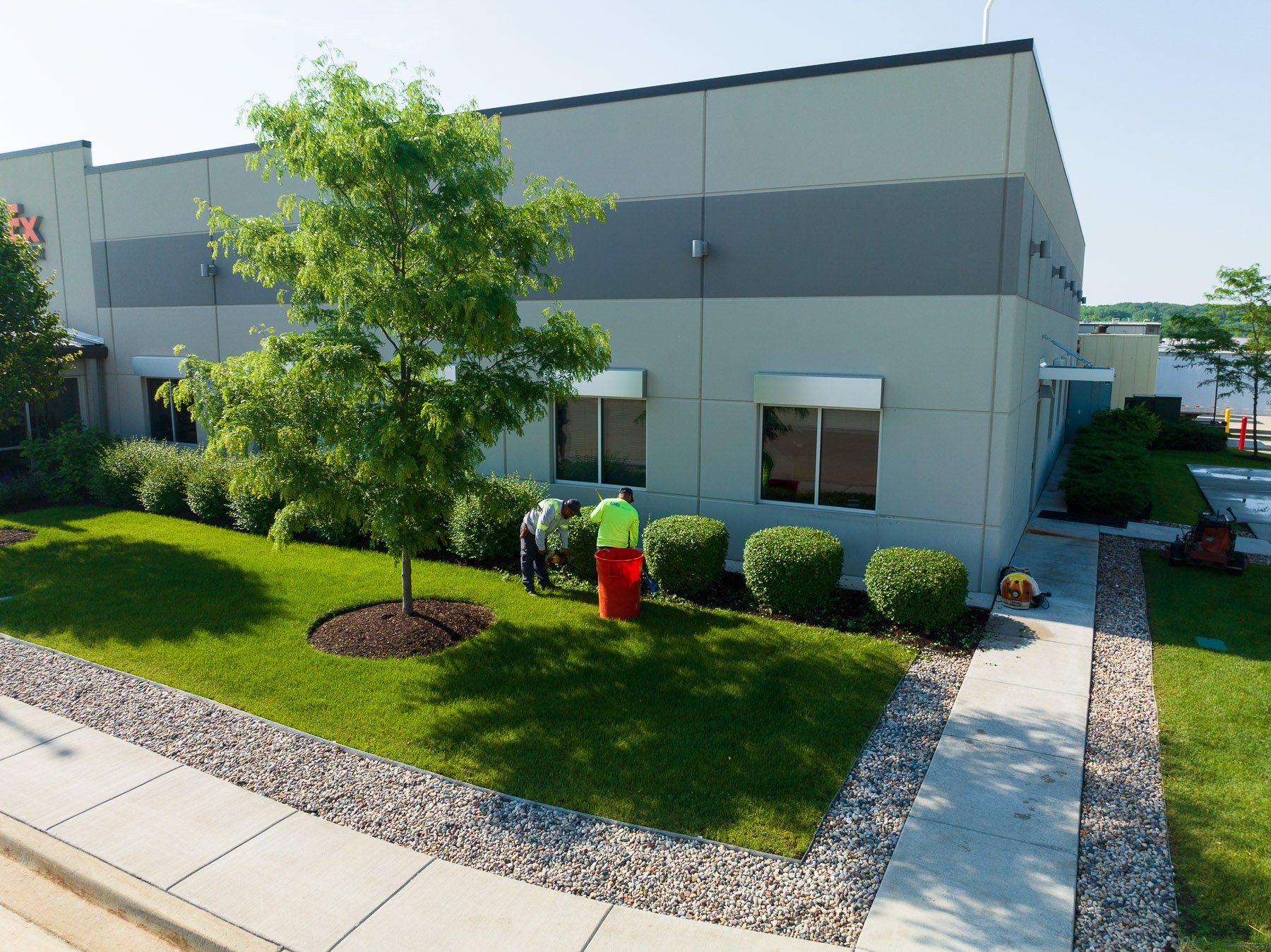
By mid-June, summer arrives with temperatures averaging in the high 80s (Fahrenheit) along with high humidity. Fall begins to emerge in mid-September when temperatures drop to between 40 to 60 degrees Fahrenheit and plants change into multiple, rich shades before dropping their leaves for winter.
Chicago winter can arrive as early as the start of December when temperatures can sink to below 20 degrees Fahrenheit. This cold comes with snow, ice, and wind chill.
If your commercial business is located by Lake Michigan, the cool lake breezes can make summers milder and snow heavier.
Using this knowledge about local seasonal conditions, property managers can strategize their commercial landscape maintenance plan to suit their specific location.
Consider these key commercial landscape concerns when planning to best meet the needs of Chicagoland’s unique climate:
- Sun or Shade Exposure: Just like you choose your outfit based on the season so you can stay warm or cool that day, you should choose and install plants based on sun or shade exposure they will receive. This is significant when planning your commercial landscape because some plants will do better in certain conditions over others. Nothing is more frustrating than having plants that look bad, reflecting poorly on your business, because they are not receiving the sun or shade they need to thrive. The right commercial landscape designer can help you plan properly to get a great look that fits your property’s unique conditions. This can also make maintenance easier for you, elevating the professional look of your site.
- Rainfall: While Illinois rainfall ranges from 30 to 50 inches a year, it doesn’t always fall evenly during the growing season. Instead of the roughly 1 inch of rain a week that many plants require, drenching rains can follow long, dry spells or vice-versa. Irrigating deeply but infrequently encourages plants to develop extensive root systems so they can seek moisture when it's scarce. Selecting native plants that can adapt more easily to these conditions is a great way to create a resilient commercial landscape.
- Drainage: Most Greater Chicago commercial landscapes aren’t perfectly flat or have precise drainage off their properties. This is why drainage and water management are important issues we deal with on commercial landscapes. And this is certainly an important one because you don’t want water causing problems to your building foundation or creating erosion issues. Staying ahead of managing water issues can help you avoid higher costs and bigger problems to fix down the road. A few solutions we recommend, depending on your specific drainage and water needs, are detention ponds, proper grading, french drains, or rain gardens.
Creating a commercial landscape that can adapt easily to Chicago’s changing climate conditions is a key dynamic property managers can embrace to reap the benefits, including better meeting tenant needs and preferences, boosting high-end visibility, prioritizing flexibility, and reducing maintenance needs and costs.
Spring Landscaping Essentials: Revitalizing Your Commercial Property
Spring is a time of rebirth. As winter melts away, the sun lingers, while birds twitter away and tulips dance in the breeze.
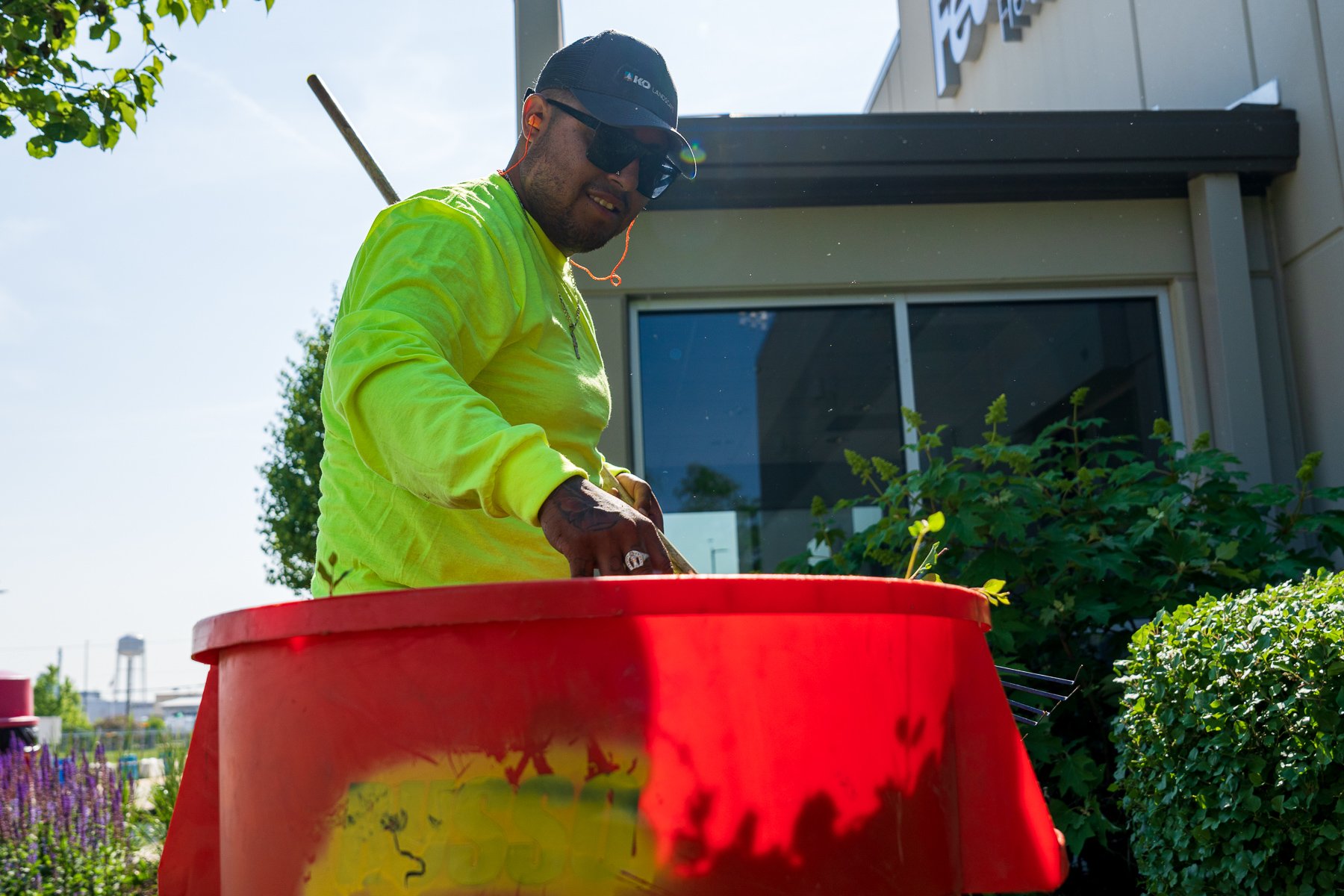
But if your commercial property looks like a mess, you’re missing the boat. Winter leaves a bit of a mess in its wake, so spring landscape maintenance is essential to start the growing season off on the right foot.
Don’t forget to add these key items to your spring landscape maintenance schedule.
Repair Winter Damage
Winter weather can definitely wreak havoc on your commercial landscape.
First, there’s the buildup of heavy snow and ice on your property and plants. Healthy, native plants that are used to Greater Chicago freezes and thaws can better handle accumulations, but there is still potential for branch breakage and damage, as well as winter burn, especially when winters are extreme or come with excessive, lingering snow piles.
Your commercial landscape service provider will inspect your trees and shrubs and remove any damaged or broken branches to ensure all your plants are clean and tidy following winter’s wrath.
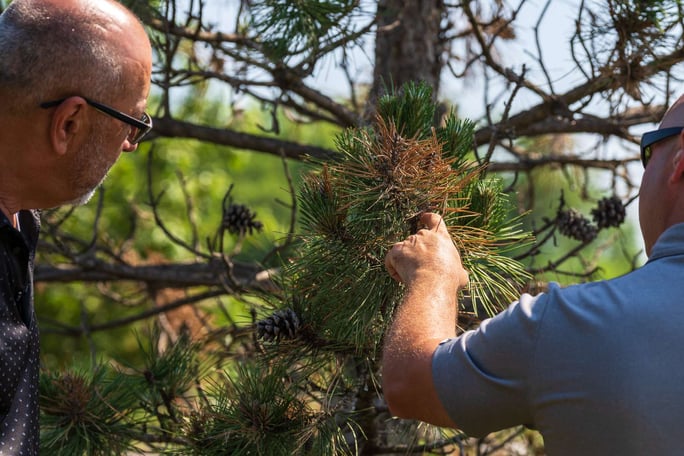
For the snow that’s piled up on your turf, your service expert will remove any plow stakes and look for snow mold potential where the lawn looks matted down. These areas can easily result in diseases like snow mold that result in tan or pink-looking splotches. Most lawns will recover, but raking out the worst spots can help dry them out and bring in air to get rid of snow mold and help your lawn look better quickly.
During winter, plows that move snow can also potentially cause some nearby turf damage since the snow makes it harder to see where your concrete ends and your lawn begins. To repair your turf, your commercial property manager will check out your lawn edges, churn up the ground, and reseed the areas so they can grow back and look their best.
Salt damage can also result in these areas nearest your concrete driveways, parking lots, and walkways. While salt is essential to helping you melt the ice that builds up over winter on your property, it can potentially burn your lawn or plants, leaving you with some brown turf spots or leaves, near areas where salt is applied most aggressively.
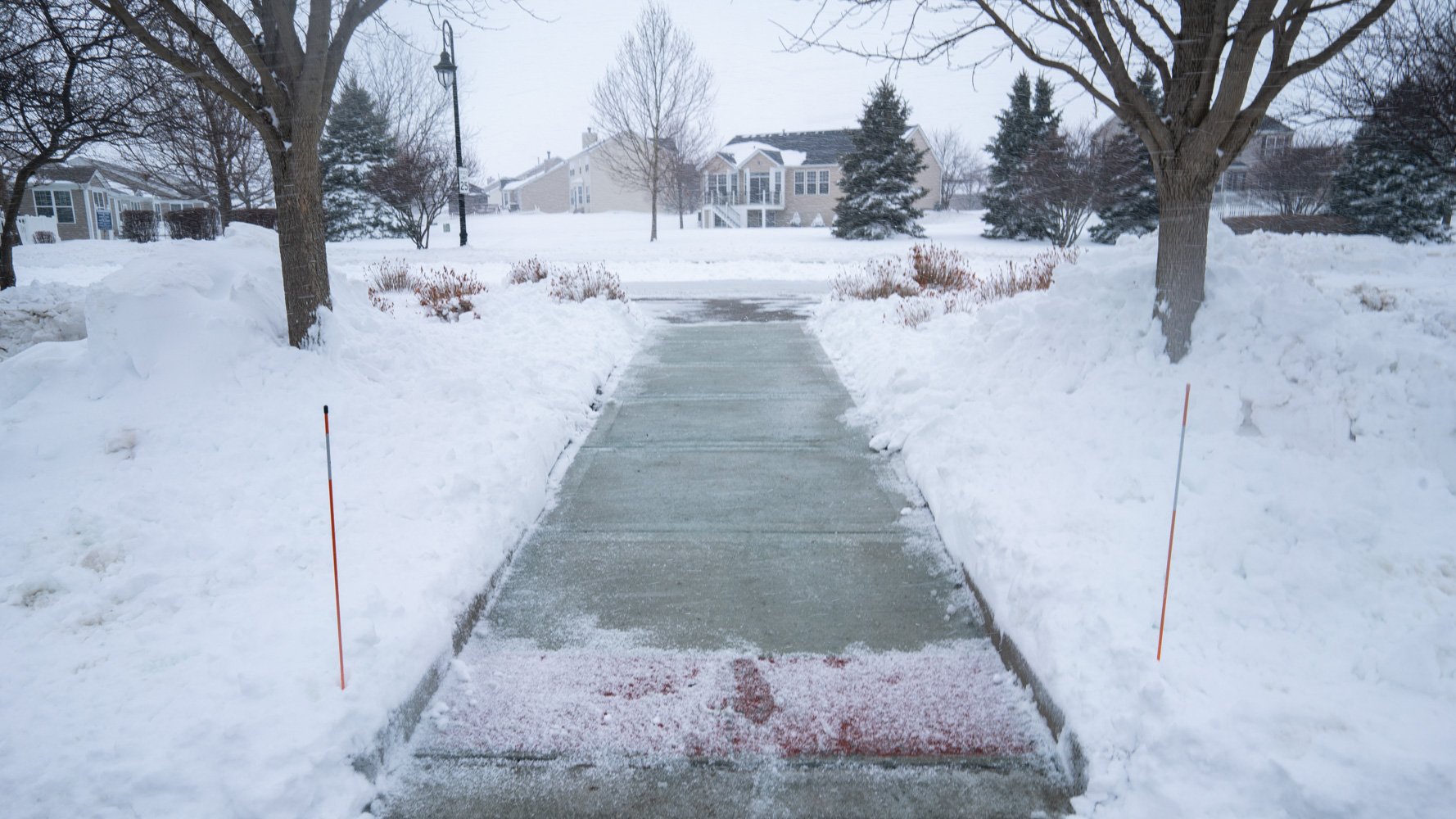
While the lawn typically bounces back from salt damage as spring emerges, your commercial landscape pro can improve the soil in these areas with an application to balance soil pH levels.
Tidy Your Site
Now that winter repair work is behind us, it’s time to clean up for the coming warmer weather. This is why spring landscape maintenance includes a thorough tidying of your entire grounds.
Your commercial landscape professional will remove leaves and sticks that have littered the grounds over winter. They’ll also pick up trash or other debris that was blown into your landscape areas and buried under winter snowfall after things have thawed.
Your cleanup also involves landscape bed preparation. We’ll edge the plant beds and apply a pre-emergent herbicide application to tackle those weeds that are best controlled before they burst through your soil. That nasty weed, crabgrass, is one of them. This preparation for your landscape beds in the spring provides an instant makeover for your property grounds.
Mulch Installation Adds Polish
Once your landscape beds are prepped, your spring landscape maintenance checklist would be incomplete if it didn’t include a mulch application.
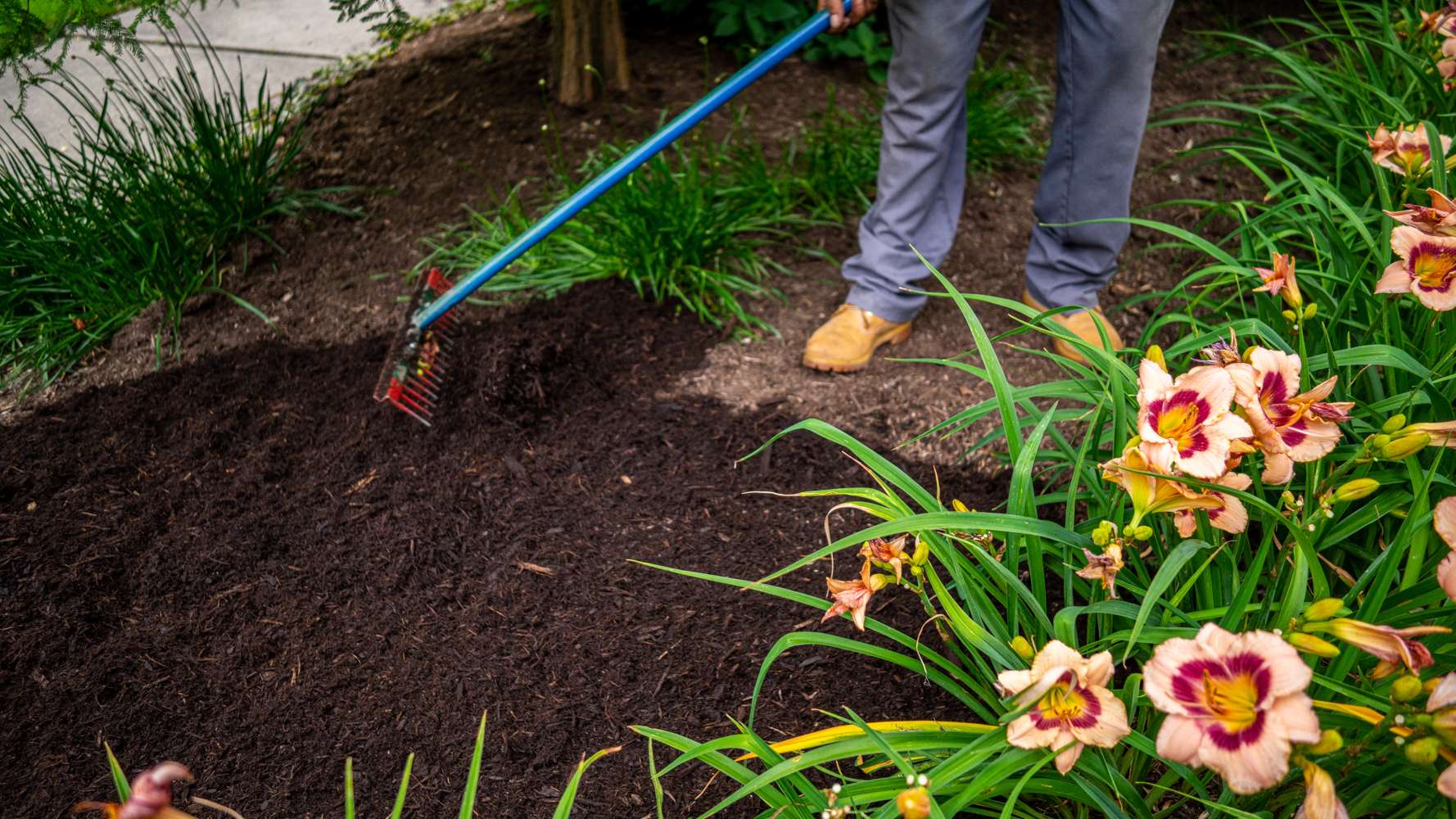
Mulch adds a great deal of value to your commercial landscape. It suppresses weeds, keeps the soil temperature even, and keeps the soil itself moist, as well as adds important organic matter back into the soil as it breaks down.
Get the maximum benefits with an addition of approximately 2 inches of double-shredded hardwood mulch.
Give Your Turf Some Attention
In addition to sprucing up your landscape beds, you want to give some care to your vast expanses of turf to ensure great green-up in spring.
Spring fertilization helps give your lawn the nutrients it needs to develop top growth, while a pre-emergent herbicide application will handle those pesky spring and early summer weeds before they get a chance to establish themselves in your turf.
The fertilizer should be balanced and your mower blades should be sharp. A first cut with sharp blades ensures a clean cut versus one that results in a torn or bruised look.
Boost Site Aesthetics With Color
Another important spring landscape maintenance to-do is the addition of spring color to elevate the look of your commercial property and give you an edge among your competition.

Greater Chicagoans crave color after a long winter. The addition of spring annuals or the early growth of fall bulb plantings give you a chance to provide this color they’re longing for before your competitors and before other plants begin blooming.
There are so many choices when it comes to spring annual color. Fall bulbs like tulips, daffodils, and hyacinth can pop up early in spring giving your site great whites, yellows, and blues. Flowering shrubs like forsythia can add pops of gold to draw the eye. And creeping phlox, pansies, and violas are great first-resistant, cold-tolerant blooms that come in a wide range of cool and warm tones to meet your unique color needs.
Summer Landscaping Strategies: Nurturing Growth in the Heat
Summertime usually brings some unique enjoyment along with its warm, sunny weather, including ice cream cones, flip-flops, and barbecue.
But your commercial landscape maintenance plan cannot take a vacation at this time of year.
Why? That hot sun can dry out soil. Weeds can thrive in these hot, dry conditions. And your flowers can wilt and your lawn can brown without proper care and attention. Before you know it, you’re hiding in shame at what summer has done to your unmaintained business landscape.
Stand proud of your attractive property in summer by including these key summer landscaping essentials.
Mow Correctly
Spring brings a rush of growth to your turf, but by summer, that activity can slow down a bit.
While your mowing crews may be trimming turf every five days in spring, in summer this can slow to every 10 days, depending on rainfall and heat.
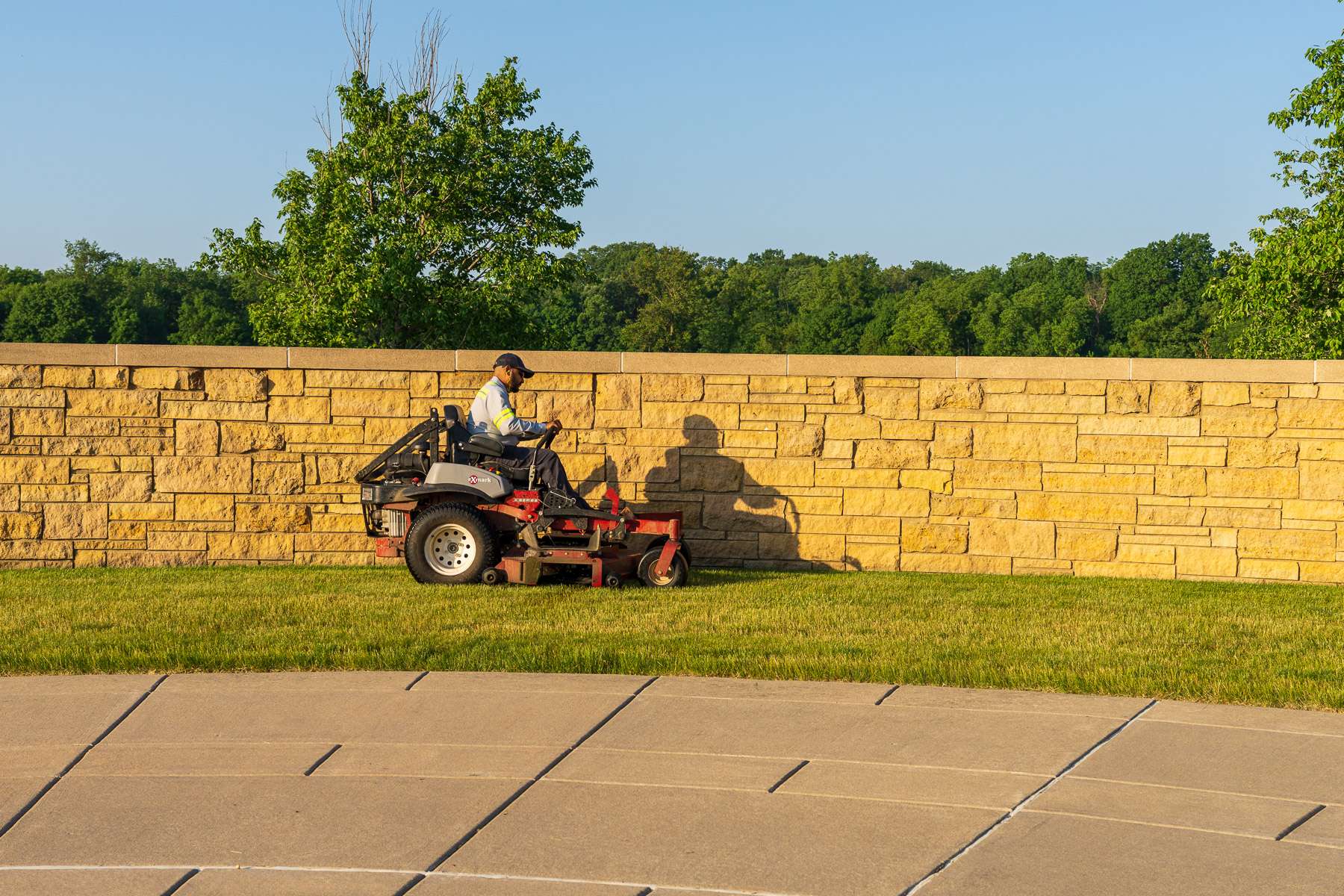
This is why proper mowing technique is an essential part of summer landscaping. We mow turf taller – keeping approximately 3 to 4 inches in height – to shade out weeds, encourage root growth, and prevent the lawn from experiencing additional stress from drought. We never remove more than one-third of the grass blade white mowing and use sharp blades to ensure clean cuts.
Mind Your Irrigation Schedule
If you want your commercial property to have lush, green turf, water is important in summer, especially during those dry spells.
An established lawn needs at least 1 to 1.5 inches of water each week. Adjusting your irrigation system to provide what you need is your commercial landscape service provider’s job.
Use Summer Color to Wow Visitors
Summer is the time to shine with some great colorful plant additions to your commercial landscaping in Chicagoland.
Bold and bright annual plant displays can make your property pop at this time of year when all the flowers are in full bloom. Embracing a proactive planning approach with your commercial landscape professional can ensure you have fresh color installed in May or June and maintained well throughout the season.
You’ll want to select some highly visible areas for your summer color to draw attention to these spots. Try entryways, near signage, and by common areas where this color can be most enjoyed.
Pruning Practices in Summer
As part of your seasonal landscape maintenance toward the end of summer, some tree and shrub pruning can be helpful.
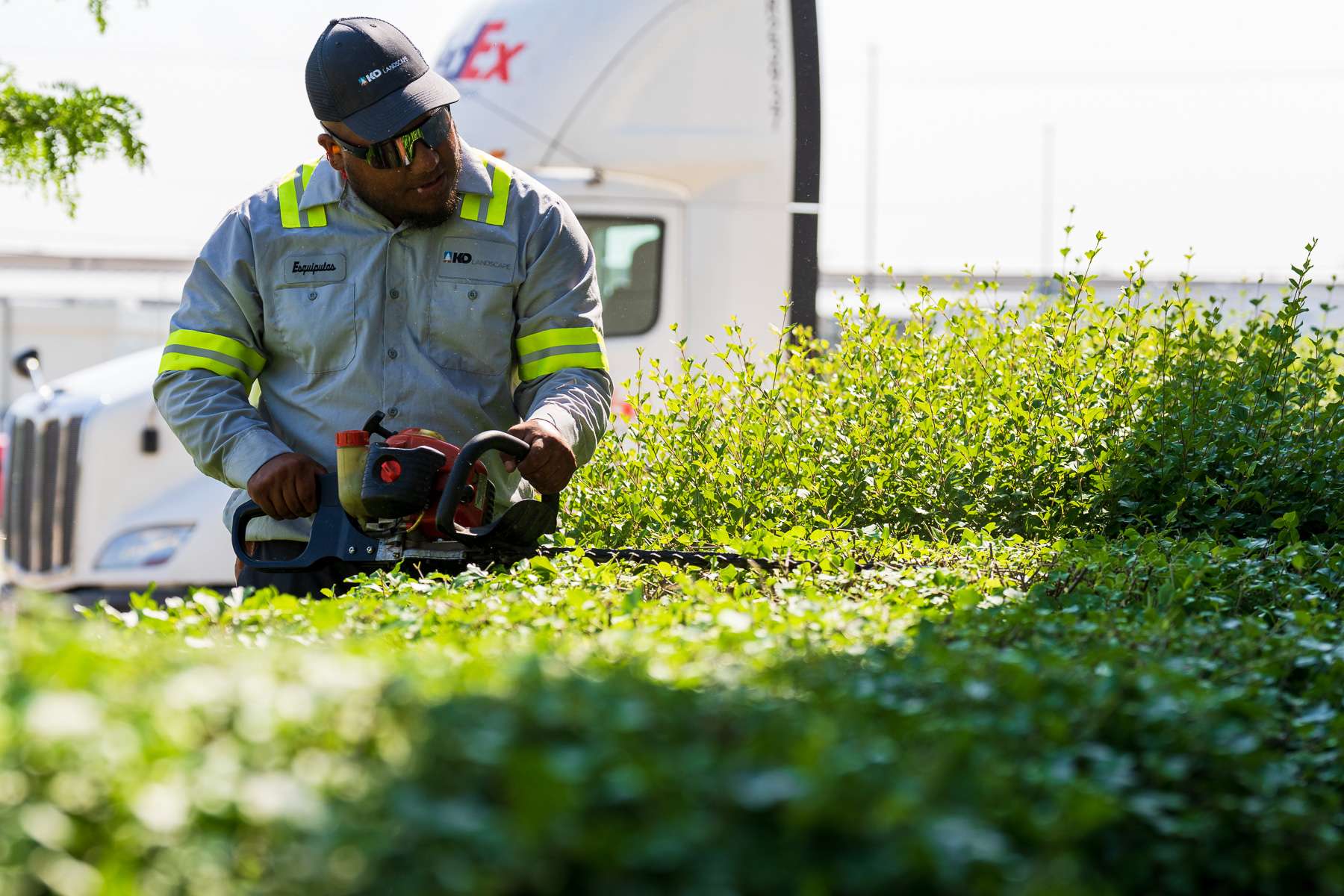
At this time of year, you’re looking to remove dead or broken branches that have been injured by summer storms. This elevates safety on your site by removing hazards and keeps your property looking tidy.
Fall Landscape Maintenance: Gearing Up for Chicago’s Winters
Shimmering leaves in glimmering gold and fiery red welcome your commercial property visitors in fall. After a hot summer, this is a welcome season of additional color but with a cooler edge.
But after those leaves wow you, they fall to the ground, and that adds up to some necessary fall landscape maintenance that you can’t avoid or else the piles collect and can lead to some trouble if left over winter.
Don’t neglect to add these tasks to your landscape maintenance schedule in autumn.
Remove Those Leaves
Removing leaves from the turf is incredibly important for its health. It prevents snow mold growth and turf death from suffocating under those bigger leaf piles.
We either rake leaves or blow them into manageable piles to enable their removal or disposal.
Plant Cleanup
Your commercial plants will naturally require fall landscape maintenance.
We start by deadheading or cutting back perennials and ornamental grasses. This not only keeps them looking tidy through fall and winter, but it also properly prepares them for great spring growth.
Your trees and shrubs also need attention with fall fertilization and pruning to help maintain shape, remove safety hazards, and encourage a proper springtime comeback.
Color Doesn’t Stop in Fall
Seasonal color can be a vibrant addition to your commercial facility’s fall landscape. You can use chrysanthemums and contrast them with vibrant purple or lime green-colored ornamental kale and sweet potato vines. During this festive season, it’s a good business move to celebrate the rich, vibrant colors.
This is also a good time of year to plant bulbs for early spring color. This ensures your commercial property is one of the first to wake up with color after winter.
Your Commercial Irrigation System Winterization
As fall arrives and temperatures cool, rainfall normalizes, and your property needs less and less water.
In autumn, shutting down your commercial irrigation system properly – blowing out any remaining water and winterizing the system – is an essential fall landscape maintenance task. It helps you avoid having any remaining water in your irrigation system that can freeze and damage pipes and cause flooding. You certainly don’t want to add costly damage and repairs to your list.
Don’t Forget Fall Fertilization
During autumn, using the time to properly prepare your commercial turf for the upcoming winter is also a part of fall landscape maintenance.

Fall fertilization boosts nutrients in your turf and ensures you grow stronger roots, which can improve overall lawn health.
Get In That Last Mow and Aerate and Overseed
At the end of autumn, we’ll mow your commercial turf for the last time. Here, we cut the grass just a little bit shorter to prevent the potential of snow mold buildup.
Fall is also a great time for aeration and overseeding.
Aeration, as the removal of small plugs of soil with an aerator, gives your tired, worn, compacted lawn a chance to more easily receive oxygen, nutrients and water at the root-level where it’s needed most.
Overseeding is a part of fall landscape maintenance because those plugs that are removed through aeration create the perfect holes for turf seeds to contact the soil and germinate. This makes the process of thickening your turf more successful.
Snow and Ice Prep
To limit any landscape damage, get ready for snow and ice during the fall.
First, secure your snow and ice removal professional in autumn so you aren’t surprised by unexpected early storms, which we can get here in Greater Chicago.
Then you’ll want to make sure your snow removal professional installs snow fencing where needed as part of fall landscape maintenance. We may need to wrap some of your trees with burlap to avoid winter burn as well.
Winter Landscaping and Snow Management
The final season of the year is winter, and you might think that since your commercial landscape could be blanketed in snow the majority of the time, there’s not much to do.
That’s not true. There are a few things you need to keep in your seasonal landscape maintenance arsenal.
Stick to these winter landscaping tips for commercial properties for best results.
Dormant Pruning
Winter is a great time for pruning your trees and shrubs despite the fact that they are lacking leaves. In fact, this is what makes the practice ideal at this time of year.
Dormant trees suffer less stress during winter pruning so you do far less damage. And, what’s more, your trees and shrubs are less likely to suffer insect or disease infestations.
You can also conduct a more thorough or aggressive pruning of some trees that are overgrown or could use some cleanup or shaping at this time of year, and they’ll reward you with fresh spring growth.
Snow and Ice Management
Obviously, you also need snow and ice management as part of seasonal landscape maintenance.
Peace of mind is essential as you keep your facility safe during winter’s onslaught of snow and ice. Ensuring you have a snow removal contract in place means crews show up to take care of Old Man Winter’s worst, while your property continues to hum smoothly through the turbulent weather unscathed.
Finding a snow and ice management professional you can trust with experience on properties like yours, as well as coming up with a plan and scope of service can ensure smooth sailing through this season.
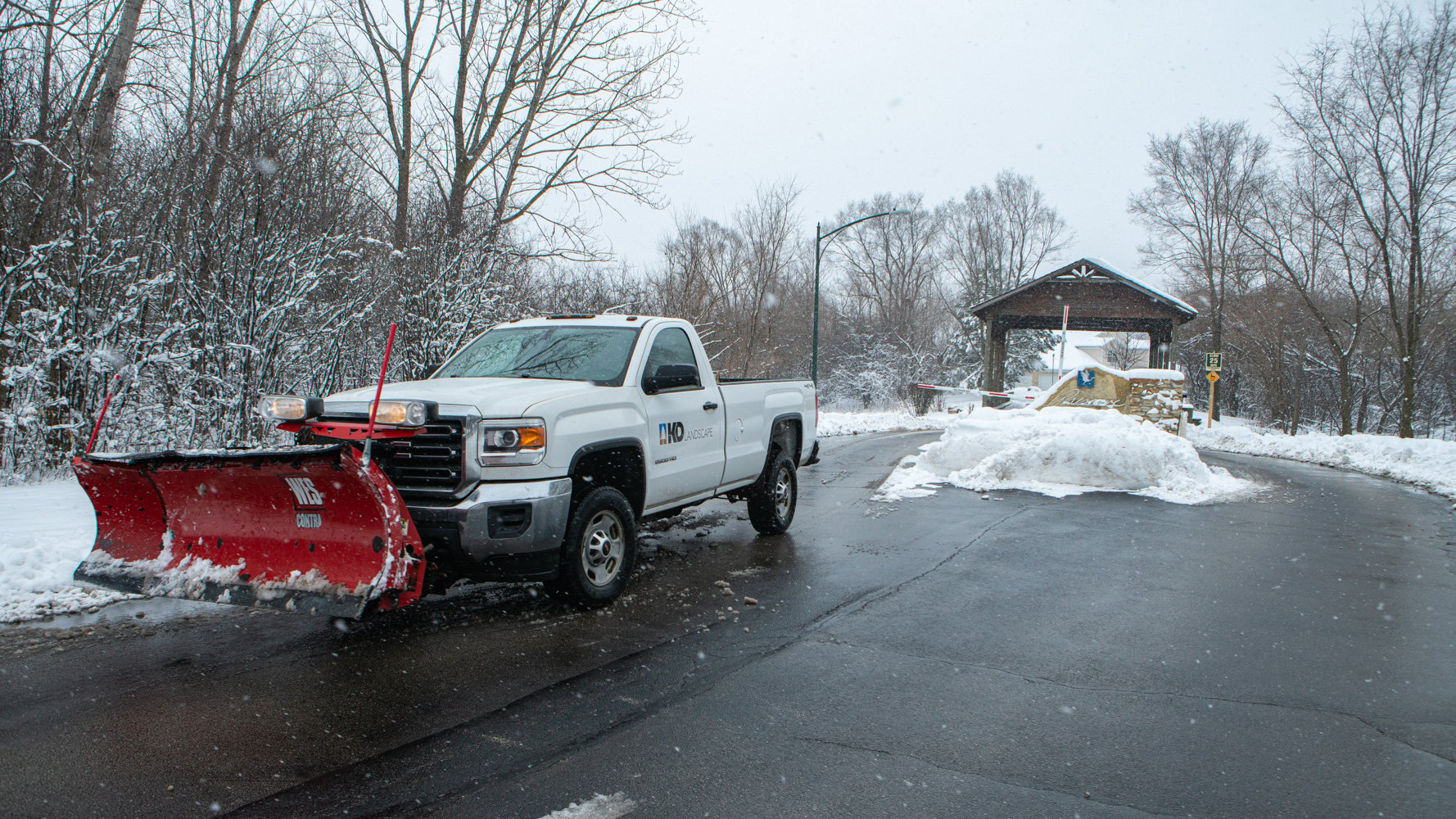
Winter Plant Protection
Plants can take a beating during winter.
To ease their passage through this season, your commercial grounds management company may apply a desiccant to your trees to prevent winter burn or wrap sensitive shrubs and arborvitae in burlap to prevent wind or salt burn.
Winter Isn’t All Gray
Color can be an option in winter, too.
Adding some evergreen plants into your commercial landscape design can bring a more inviting and welcoming appearance in winter – and the rest of the year as well. You can even add containers to entryways or highly visible areas and fill them with evergreen plants, boughs, branches like red twig dogwood and festive lights.
Sustainable Landscaping Practices for Commercial Properties
The way you maintain your Greater Chicago landscape can have a pretty big impact on the environment.
Sustainable landscape maintenance works with nature rather than against it, contributing to an overall healthier environment.
Sustainable commercial landscaping in Chicago is a great way to optimize sustainability concerns, save costs, and promote a greener business. Try these ideas.
Plant Natives
One of the best ways to embrace eco-friendly landscaping is to use plants that are native to Greater Chicago.
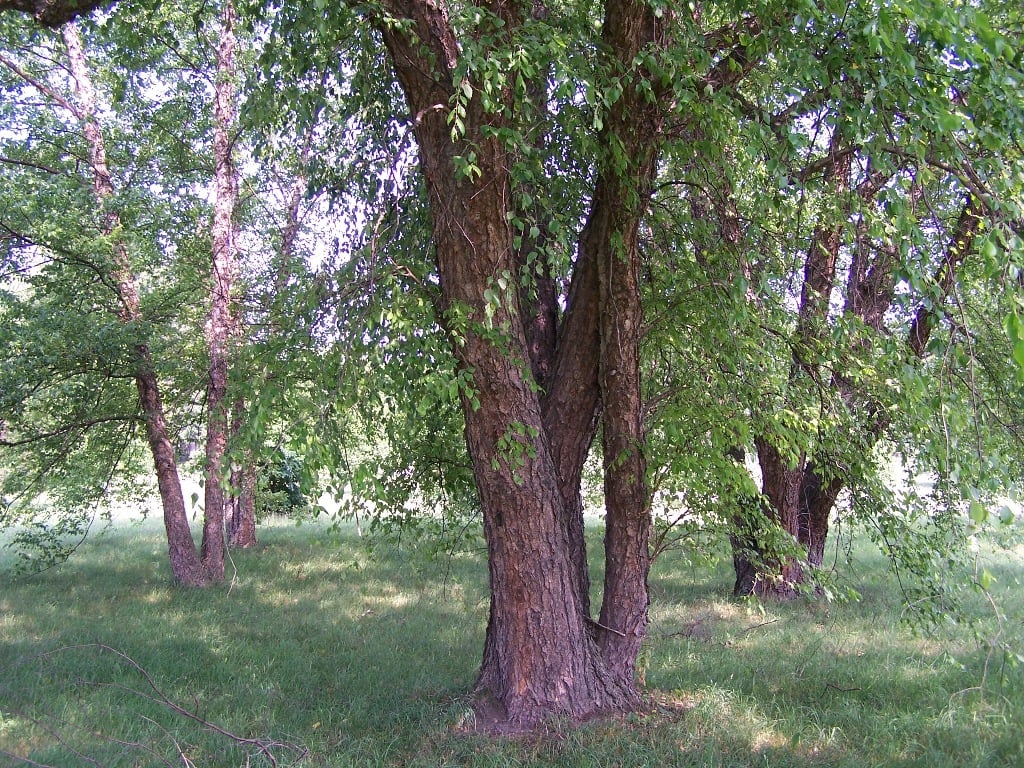
These species are already adapted to our local environment, not requiring extra water or nutrients, so you’re already using fewer inputs to have a thriving commercial landscape. This also naturally reduces your seasonal landscape maintenance needs.
Native plants also draw pollinators like butterflies, bees, and hummingbirds, bringing a visual element to your common areas.
Water Wisely
Ensuring you use a smart commercial irrigation system that is well-maintained and uses the help of soil moisture and rain sensors to ensure you’re watering only when necessary helps save water output.
An optimally designed and maintained irrigation system also ensures water goes only where it’s needed. For example, drip irrigation can target water to your plants’ roots in your landscape beds, so it isn’t lost to wind.
Not only does this save water, but it reduces your water bills, which is a business bonus.
Use a Detention Pond
When stormwater falls on hard surfaces like parking lots, roads, paved sidewalks, walkways, driveways, and rooftops on your commercial site, it cannot seep into the hard ground. So, it runs off onto other lower areas. Because more water runs off of hard surfaces, local flooding can even occur.
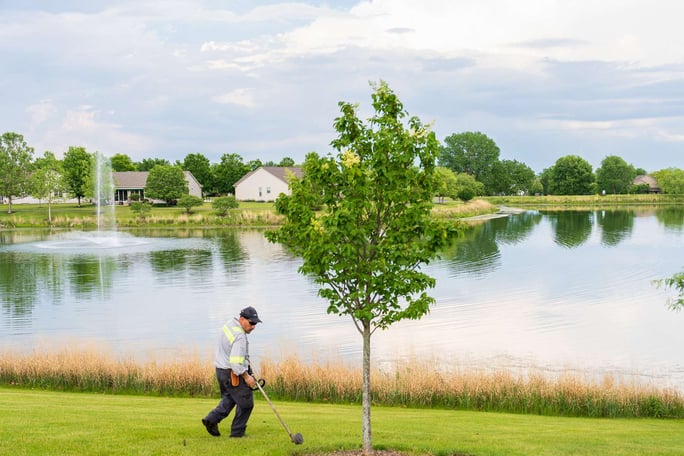
That’s why sites like these will use detention ponds to collect their stormwater and better manage it on their facilities as a part of sustainable commercial landscaping in Chicago.
But a detention pond can’t do its job without proper maintenance, including stabilizing shorelines, restoring surrounding turf, and hiring a pro to help prevent erosion.
Choosing the Right Commercial Landscaping Partner in Chicagoland
If you find that during some seasons your commercial landscaping in Chicagoland is not looking up to your specifications, it might be time to investigate whether you have the right commercial landscape company.
Choosing a landscape company that will work as part of your team can ensure your facility looks good all year long and not just during one season.
Seek out these specific characteristics to ensure a good partnership.
Greater Chicago Commercial Landscape Experience
Review your specific goals with a company that provides commercial landscaping in Chicagoland. Ensure you discuss the maintenance you’re looking for during each season.
A trained team with specialized experience ensures your current and future goals will be met.
Commercial Maintenance Contract Details
Understand the specific offerings the commercial landscape management company provides. The right commercial landscape partner for you will be transparent and open about the services they provide, how they conduct business, and their strategies for special requests.
They should be able to answer all of your questions and then include specific details in your contract.
References From Similar Property Types
When you choose a commercial landscape company, you want one that can provide you with references and examples of their work so you can do your research prior to hiring them.
This way, you can be more confident in your final choice.
The Importance of Communication
You want to choose a company that offers commercial landscaping in Chicagoland that offers frequent and convenient communication.
Brief monthly meetings, in addition to quarterly or at least biannual meetings for review and redirection, help maintain an ongoing dialogue. This helps you address concerns and make sure your needs are being met.
Conclusion
You should also be able to expect a high level of value from your commercial landscape service provider in Greater Chicago. Your partner should remove your headaches – not add to them. This may be the most important part of your commercial landscape maintenance plan.
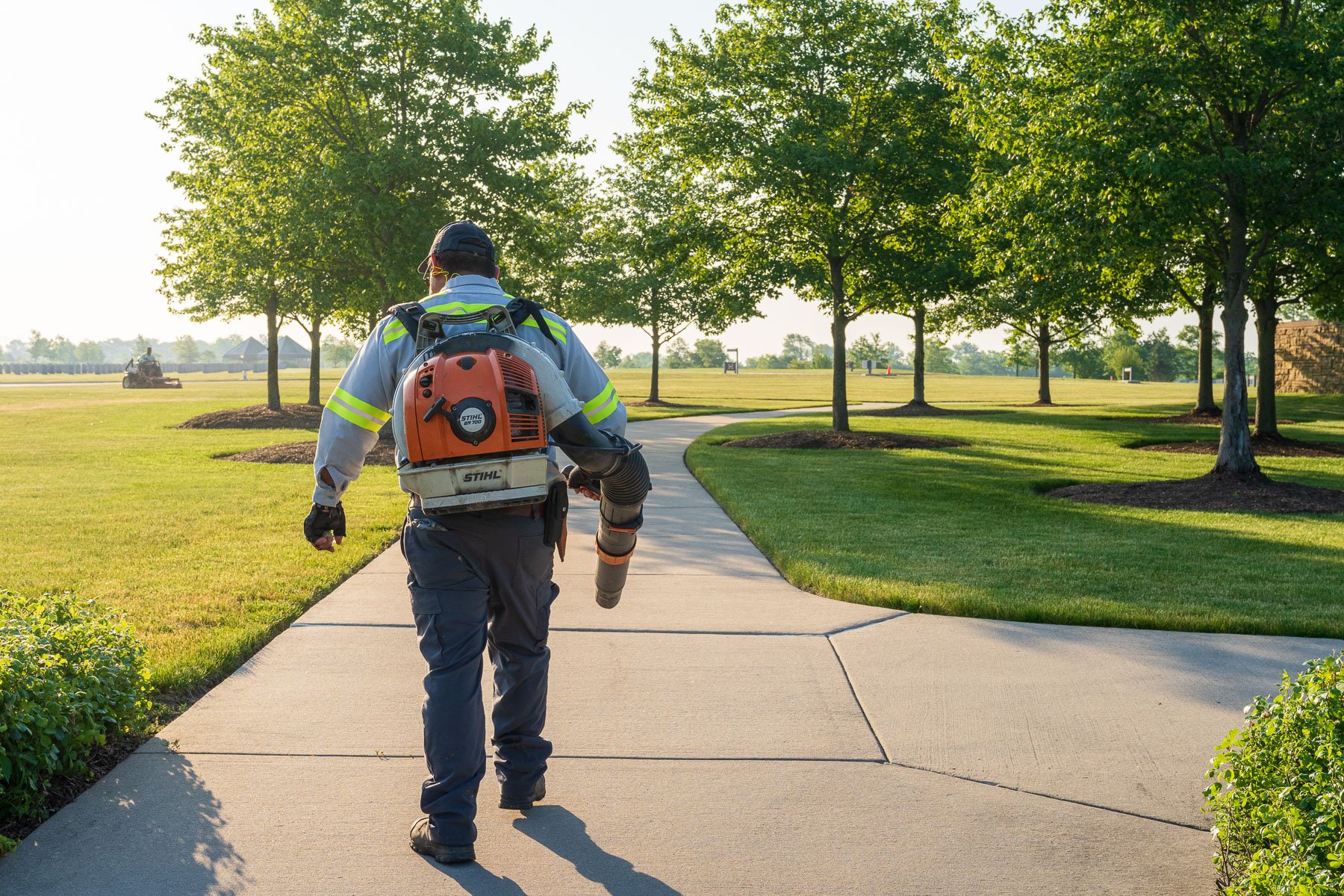
Hiring a commercial landscaping company is an important decision. This is because your service provider doesn’t function as just a vendor; your commercial landscape crew becomes an integral part of your property management team. They should make your life easier and less stressful – all while providing your site with a professional, polished look you love.
As we reviewed above, there are specific tactics during spring, summer, fall, and winter that can ensure your property not only looks great during each and every season of the year but actually thrives. And there’s nothing better for business than a growing, gleaming, professional environment.
We’d love to help you with your commercial property needs in Greater Chicago and make your property management job easier. Give KD Landscape a call today so we can be that landscape partner that helps you improve your facility’s curb appeal.
Image Source | River Birch




